Sandy Lodge is celebrating its centenary this year. It was the brainchild of James Frances Markes, who had been a mining engineer and businessman. The damp, clay conditions of Neasden GC (nle) influenced him in prospecting for sandy ground on which to build his golf course. He found that land on the Moor Park Estate, conveniently close to the Metropolitan Railway. This was significant in establishing the club, for many prospective members lived in London and journeyed out to the club by train. They had a station built (Sandy Lodge Halt, later re-named Moor Park). Markes was by far the majority shareholder in the club and he ran it in a dictatorial manner for over 40 years, including the difficult times of two world wars. He wrote copiously on course maintenance and was a green committee of one. For the rest of the history you will have to wait until the centenary book comes out in the spring, though there is much on the clubís web site.
Sandy Lodge is sometimes credited to Harry Vardon, who was based nearby at Totteridge. What has become clear in the course of our research is that Markes himself designed the course with some input from Vardon, a life-long friend and advisor. Very late in the day we discovered a notebook used by Markes which has all sorts of sketches and notes for drainage, bunkers, individual holes and so on. Before the course was completed, however, the landlord withdrew some of the intended land, substituting other land and Markes single-handedly re-routed part of the course himself as Vardon was unavailable at the time. Given his confidence in all matters to do with running the club it does not surprise me that he would be bold enough to design the course himself, supervising all matters of construction personally. A lot of earth moving was involved as Markes wanted to create a true inland links. He brought in links turf from North Berwick, Le Touquet, Aberdovey, Deal and Hunstanton. He also built a relief course for ladies, juniors and high-handicappers but this did not survive the Second World War. Interestingly in a big professional tournament played in the late 1930s a composite course was used to provide a finish in front of the clubhouse. Some of that land now lies fallow while the rest was turned into a practice area close to the clubhouse.
Markes did a little tinkering with the course in his lifetime, reworking some bunkers, altering the relief course from 9 holes to 12 by dividing up some of the longer holes, and by lengthening the 10th substantially by building a new green from material excavated from a pit on the 7th. Since then there have been few alterations, the most significant happening in 2000 when a largely in-house team working to a very tight budget, led by the clubís professional, Jeff Pinsent, made some amendments to the bunkering, while restoring heather, broom and gorse. Four new back tees were added but no greens were altered. The big difference to the course today is that during the Second World War, with minimal manual labour and Markes around the age of 80, trees began to grow in profusion. Further trees were planted as a safety measure. The changes of 2000 were intended to bring Markesís playing strategies back for the longer hitter and to cause the lesser player to have to think a little more strategically than previously. What is abundantly clear is that Markesís construction methods were sound, for the structure has stood up well to 100 yearsí use. Should he be grouped with Fowler, MacKenzie and Abercromby whose first essays in golf course architecture (at about this time) were all very impressive?
1. 488 yards par 5 (470 yards par 4 from championship tees)
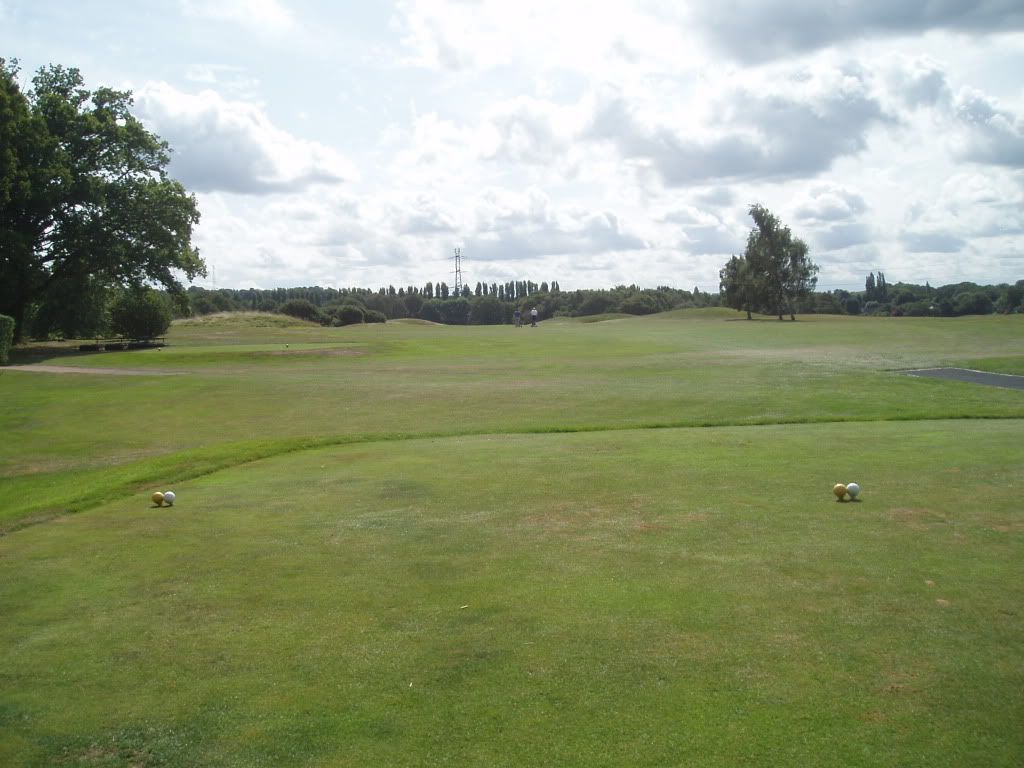
A somewhat blind drive over a crest is followed by a good downhill run if you get a good drive away.

Pinsent introduced moulding to give greater definition to the fairway.
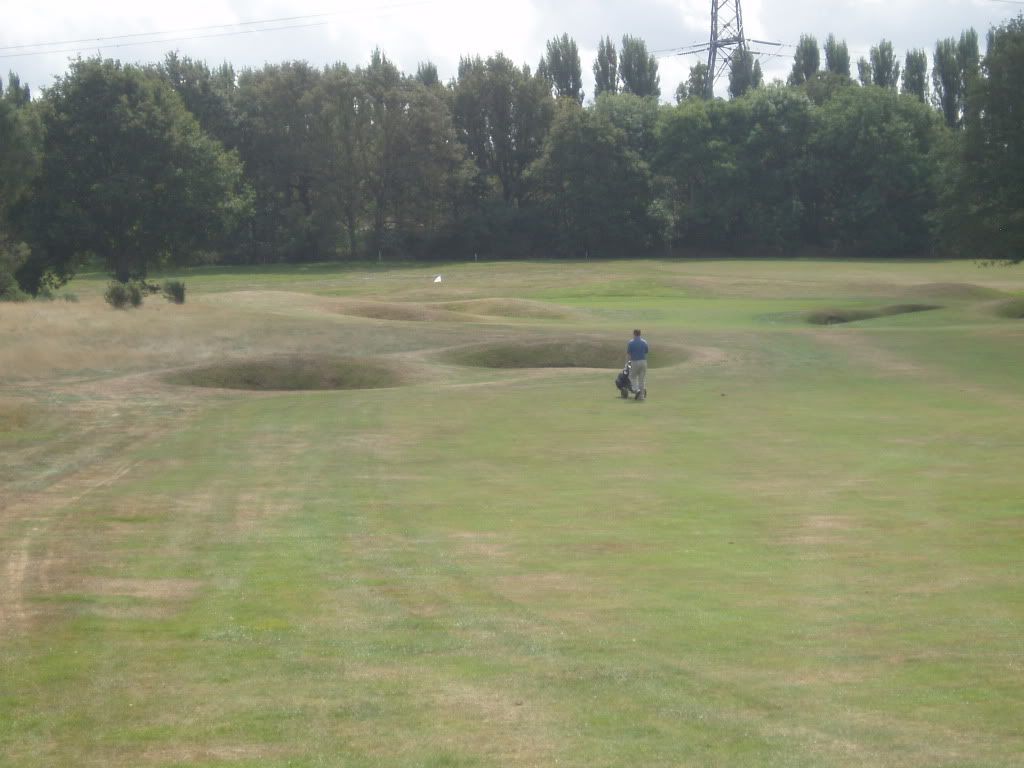
Markes had a semi-circular cross bunker protecting the whole of the front of the green. The long hitters were getting frustrated. They had to lay up in front of the green (which is shallow from front to back Ė 23 yards). Pinsent removed some of that bunker in order to give a viable entrance to the putting surface Ė essential to play the hole as a par 4 - but has tightened the bunkering on the approach.

The toughest pin positions on this largely flat green are tucked behind the bunkers on the left.
2. 426 yards par 4

Pinsent has created a new back tee on the far side of the 16th tee adding 53 yards to the hole, bringing fairway bunkers on both sides back into play. For normal play from the medal tee the length is 367 yards. The famous bunker in the distance is 296 yards from the medal tee.
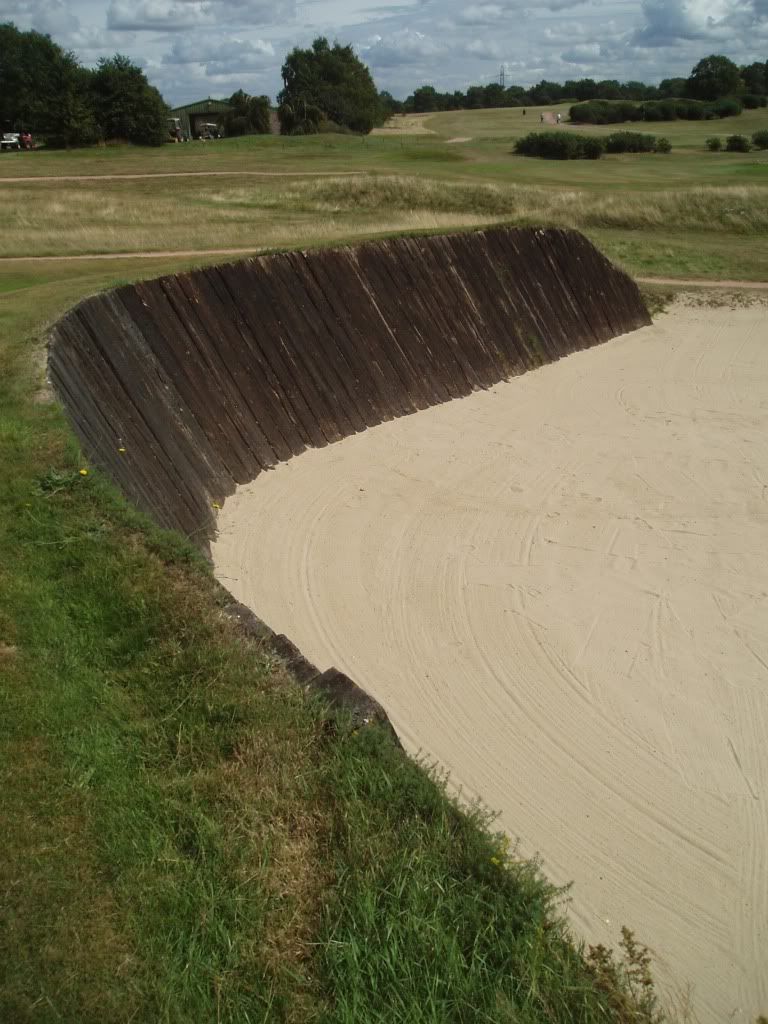
Markes spent considerable energies on this bunker. He used a Ďclinometerí to measure the angles of the sleepers. His principle was that a thinned shot should not be able to hit the sleeper and bounce up towards the green, but that it should bounce back into the bunker with sufficient height to clear the head of the golfer.
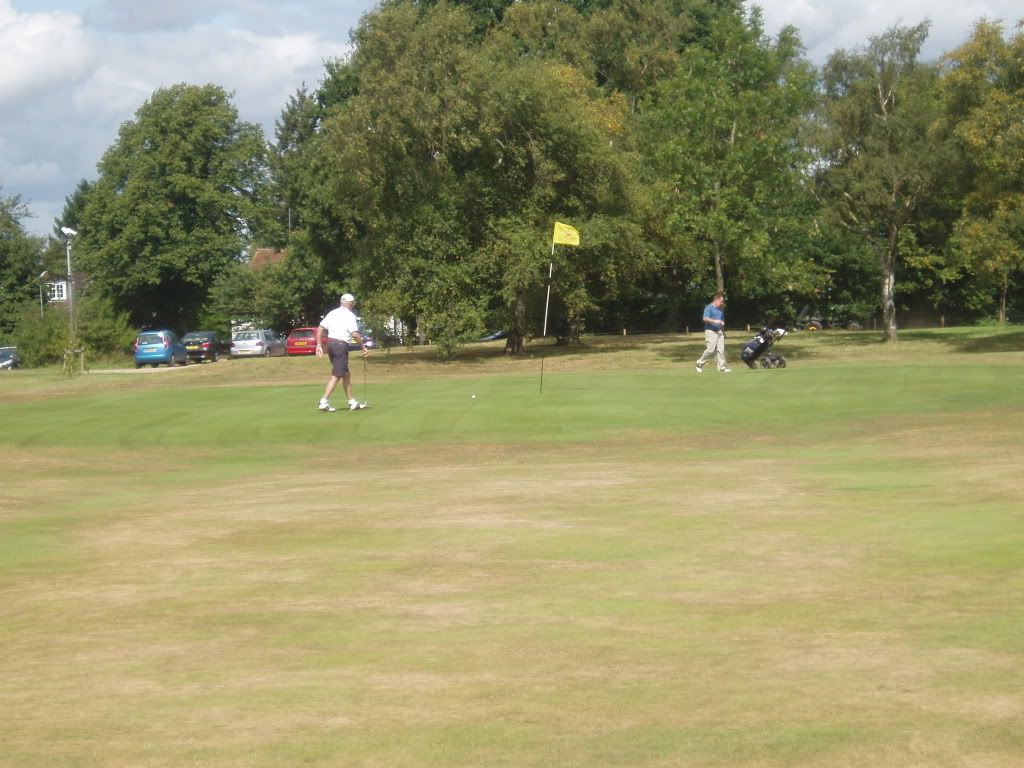
The green itself is relatively uncomplicated, but the pitch must be well judged because you can only see part of the flagstick from the fairway.
3. 171 yards par 3
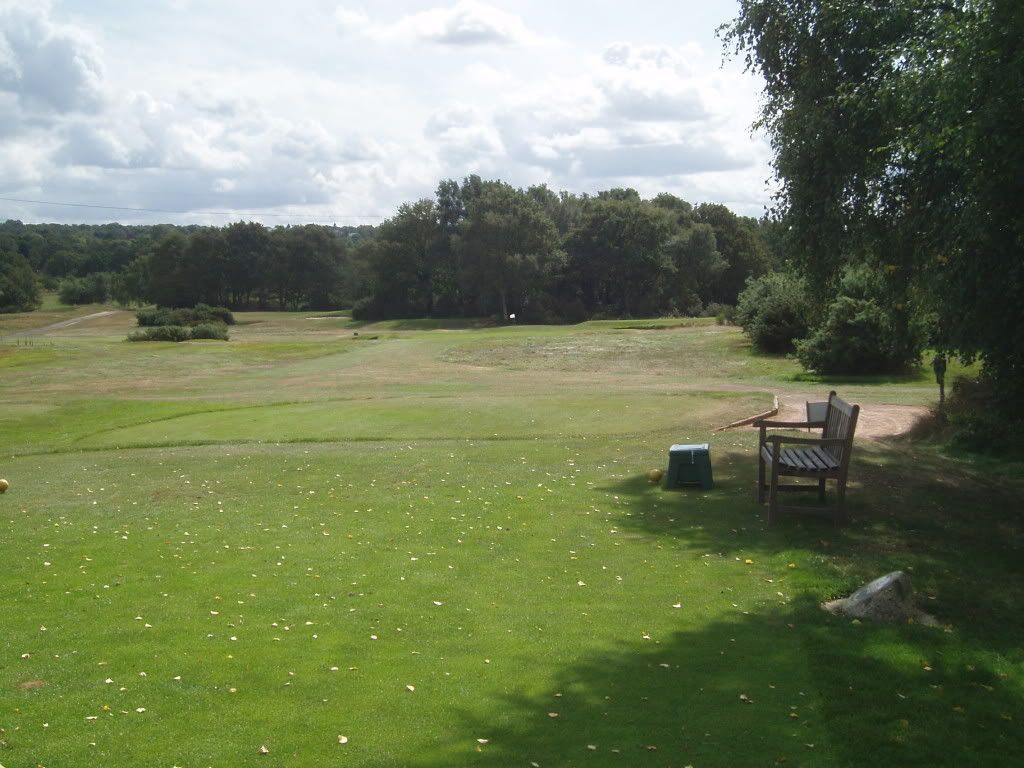
A charming downhill short hole at the mercy of the wind.
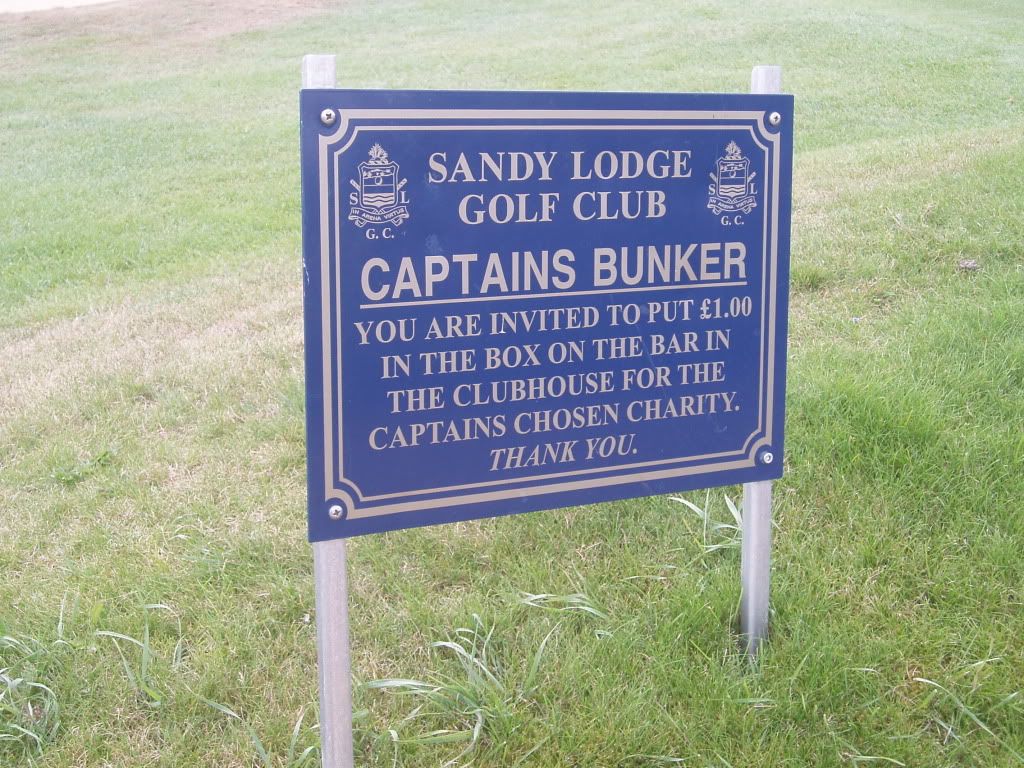
Somebody send the club a couple of apostrophes please!
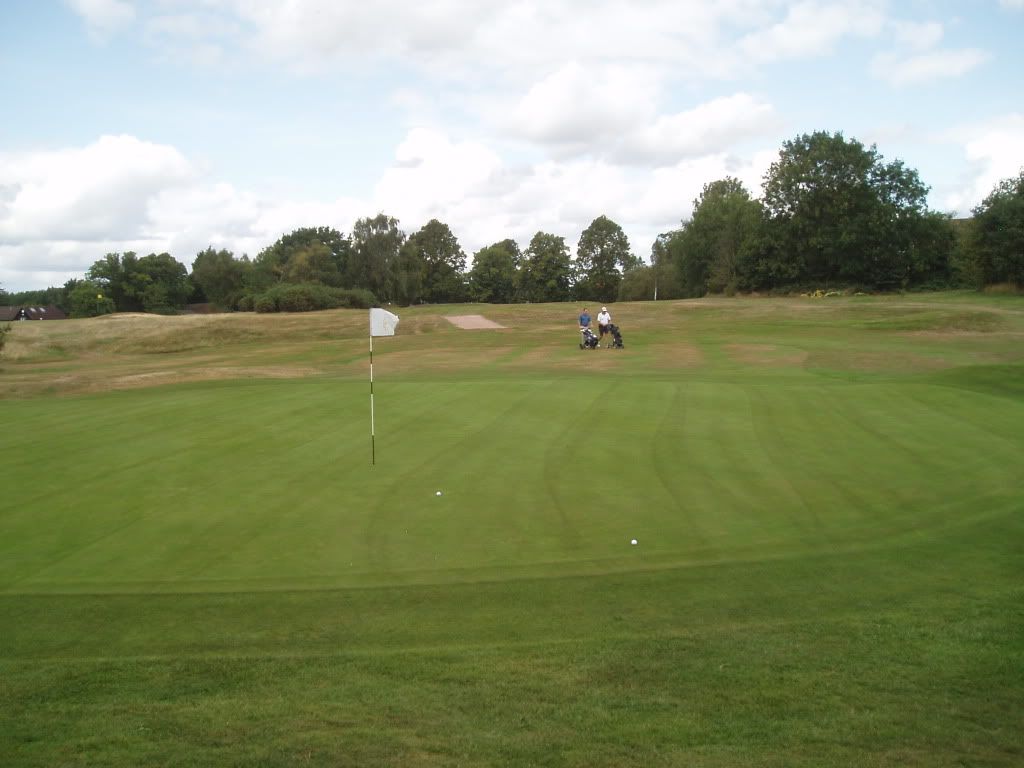
From behind the green, looking towards the tee.

As on many links courses you are better off in the bunker than wide of it.
4. 501 yards par 5

There are two marker posts. You choose the one appropriate to whichever tee you are playing from. Not only is it an uphill drive, but there are mounds and uneven ground if you stray right.
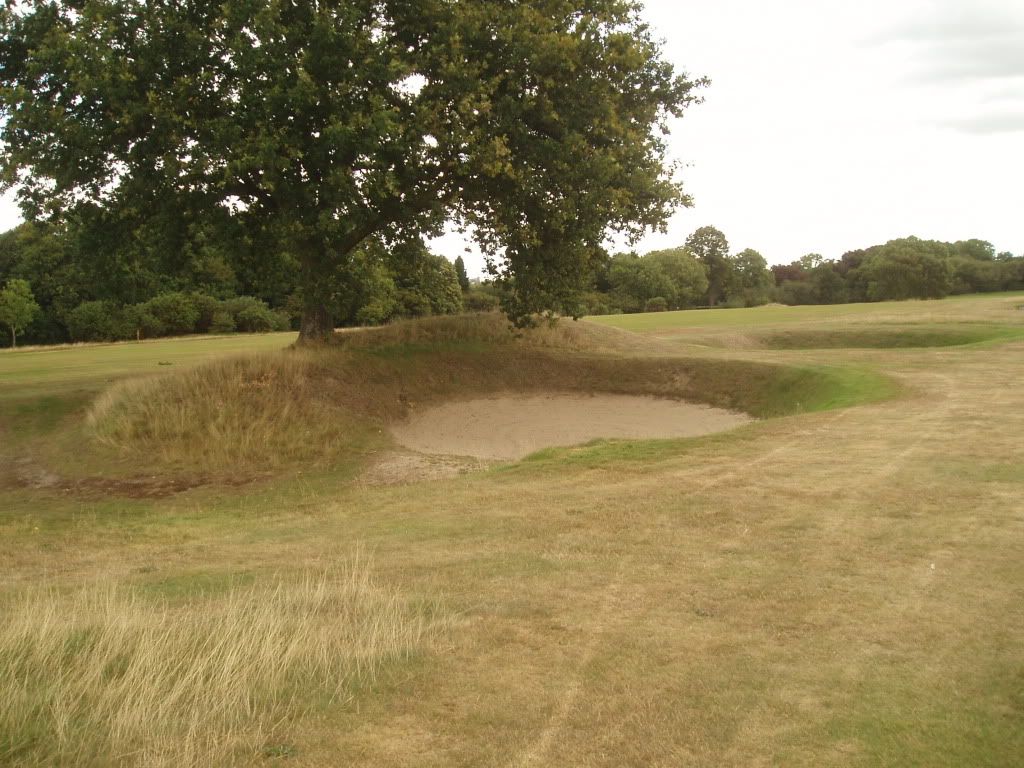
Four bunkers await from 242 yards to 298 yards if you stray to the left.
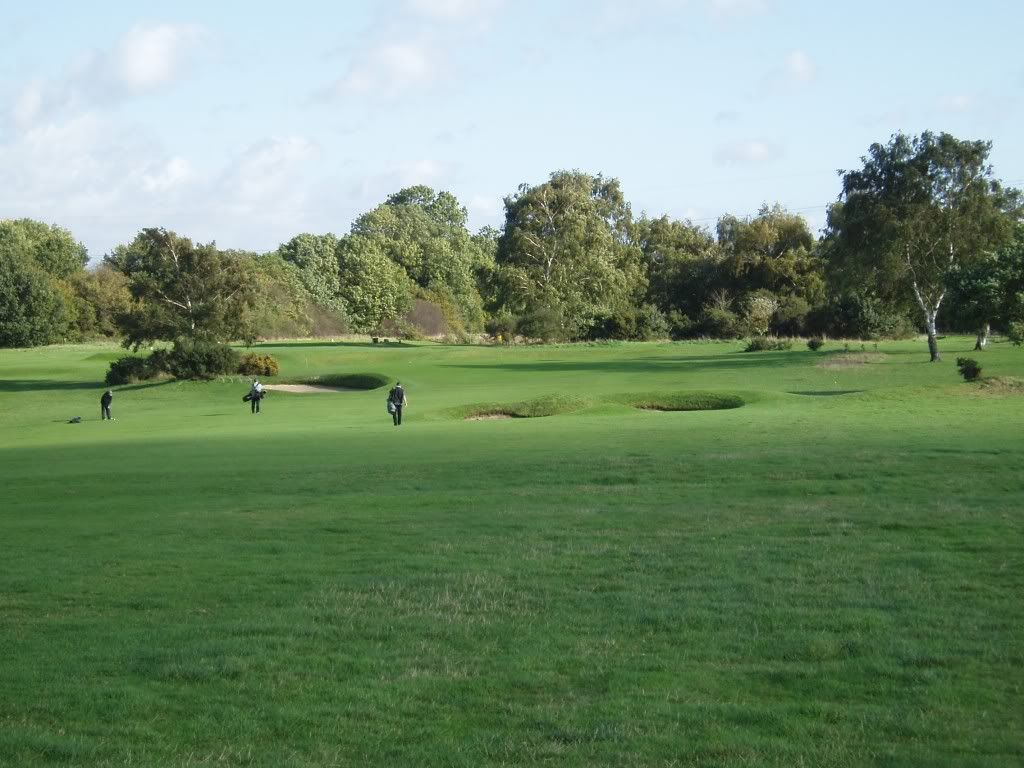
This picture shows the approach from the right hand rough with a prominent bunker well placed about 50 yards short of the green and another little one front left, behind which tricky pin positions are found. Putting down the green from the back is not easy.
5. 454 yards par 4
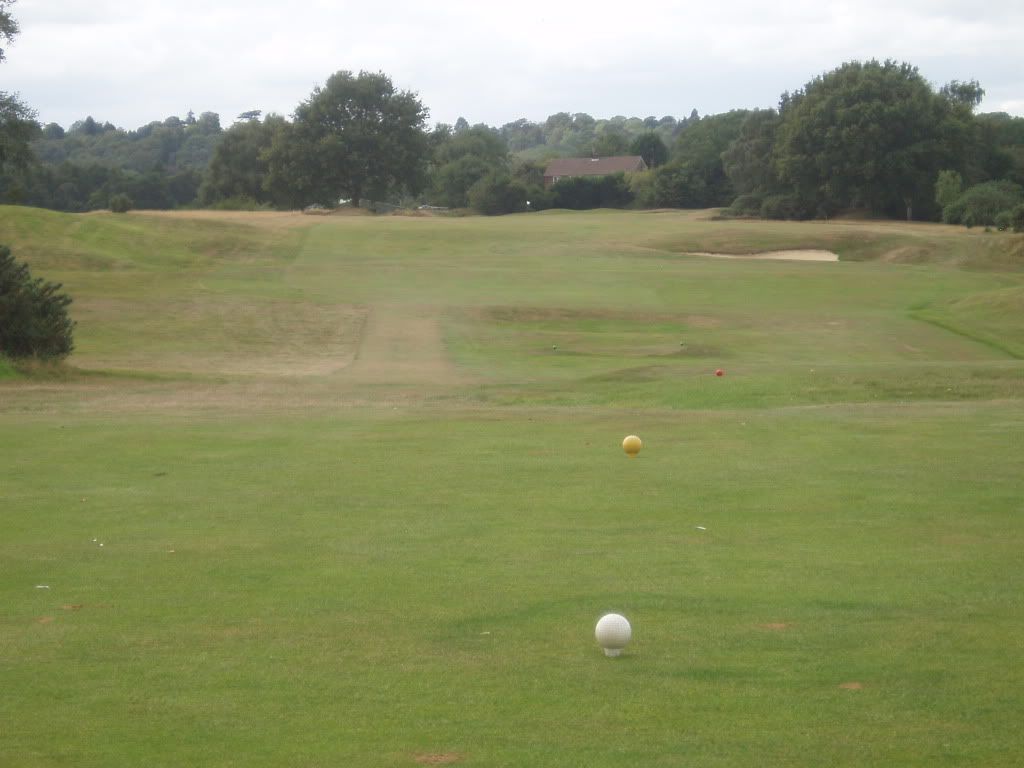
Another fine par 4. That bunker, cut into the ridge, is 219 yards out from the back tee, and of no concern to the big hitter. But it is 187 yards from the medal tee and very much of concern to the rabbit. It used to extend across the fairway, but Pinsent closed the left hand part of it to create a corridor for the lesser player.

There are bunkers left and right of the fairway for most of this hole. The trees tend to draw the eye towards the green, foreshortening the hole. There is quite a lot of dead ground before the green.
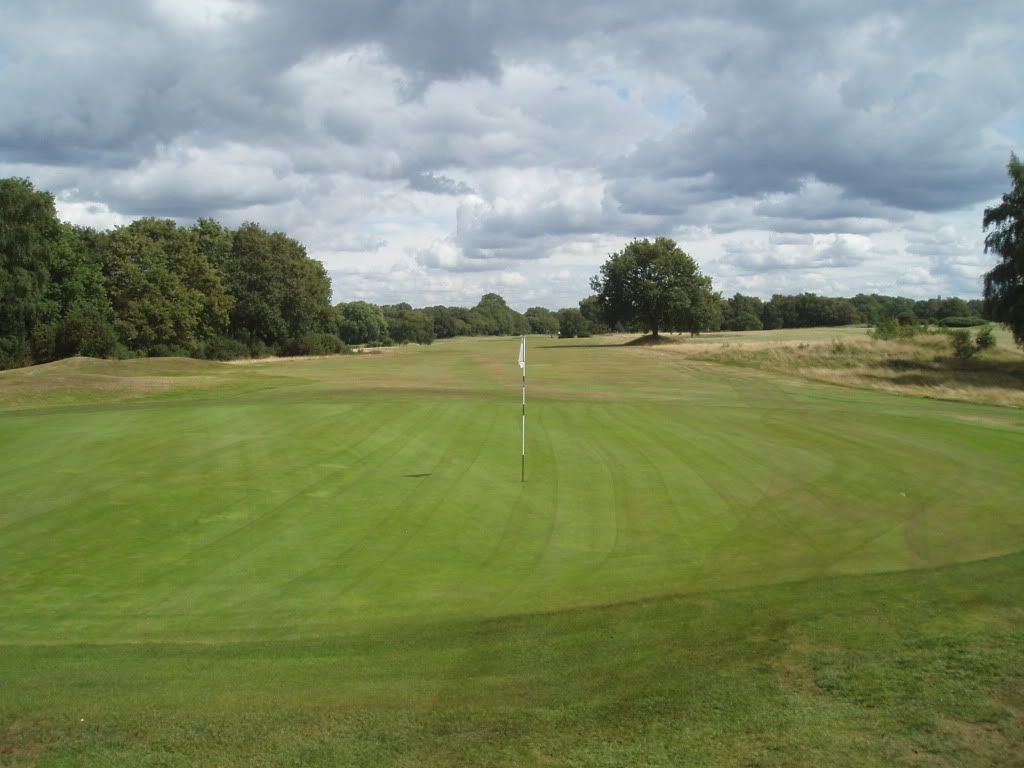
This is a fairly easy pin position, but rear right of this stepped green is tricky.
6. 456 yards par 4
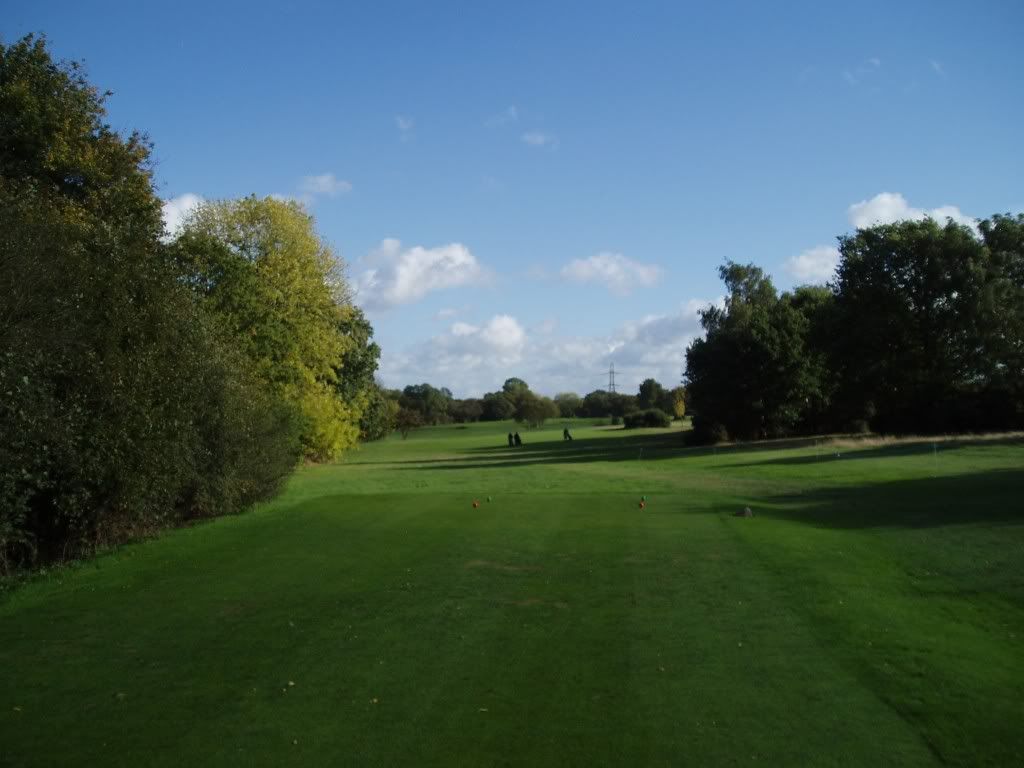
Another sterling two-shotter. In the distant past it was all too easy to drive into someoneís garden on the left. Many trees were planted and the tee angled away from the out-of-bounds fence. The problem is that the fairway slopes considerably from right to left. But you want to approach the green from the right.
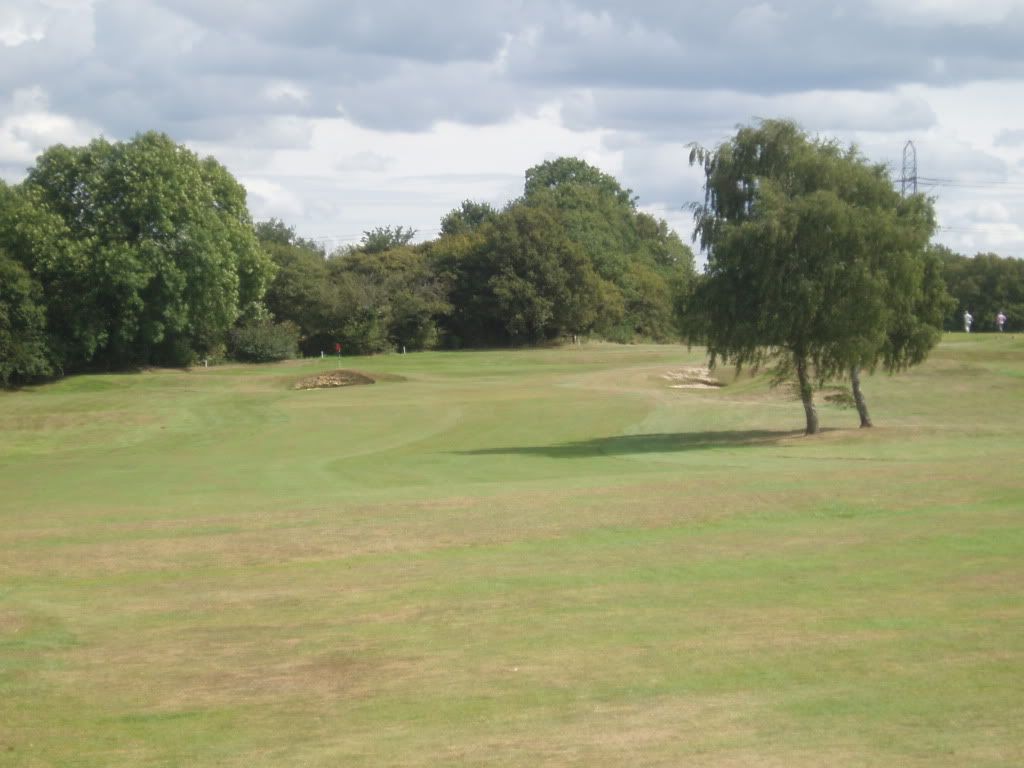
This would be the perfect spot from which to approach.
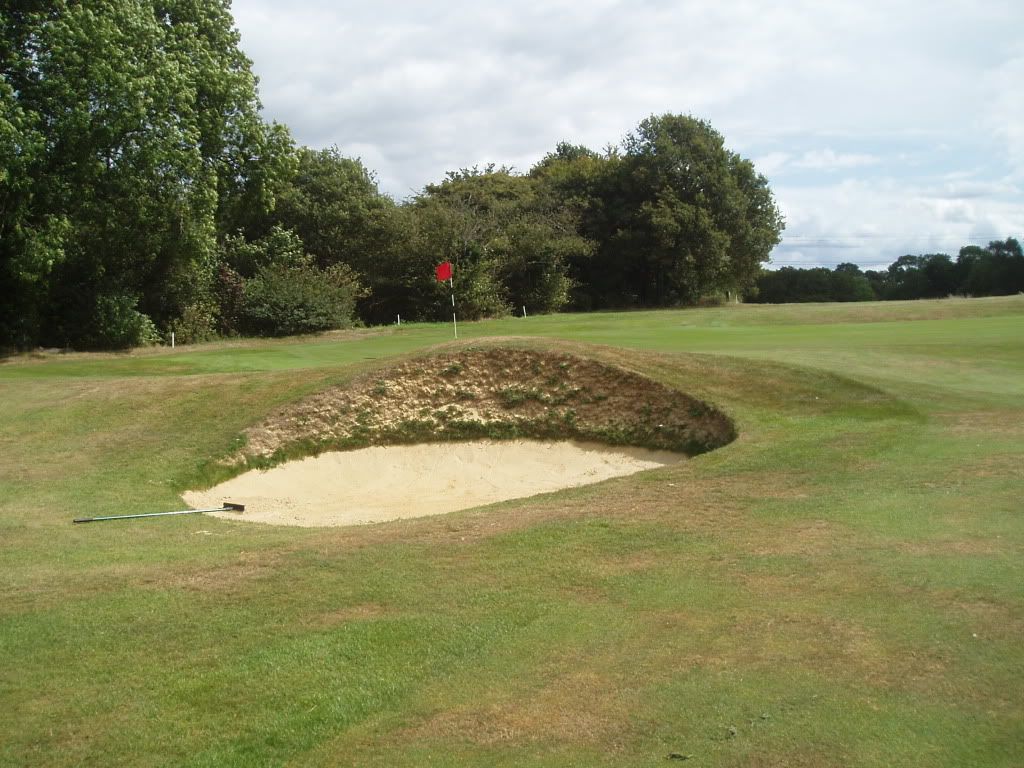
This serious pot bunker concentrates the mind. Note how close the out-of-bounds markers are on the left.
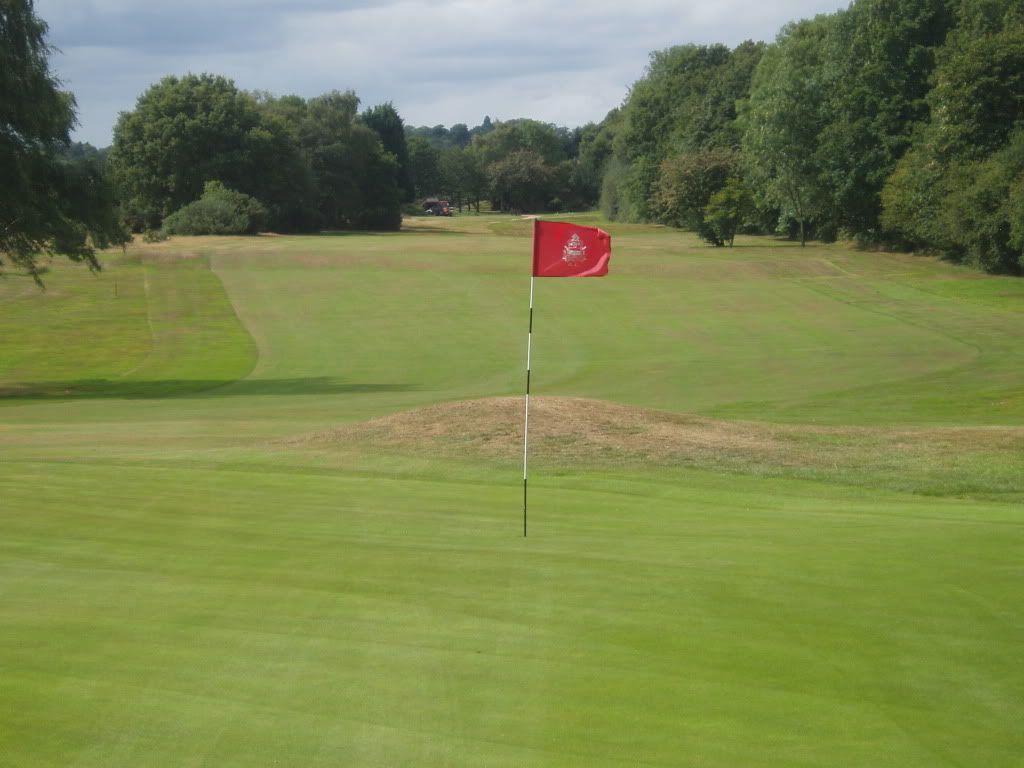
That is the end of the hard stuff. Time for a breather.
7. 193 yards par 3
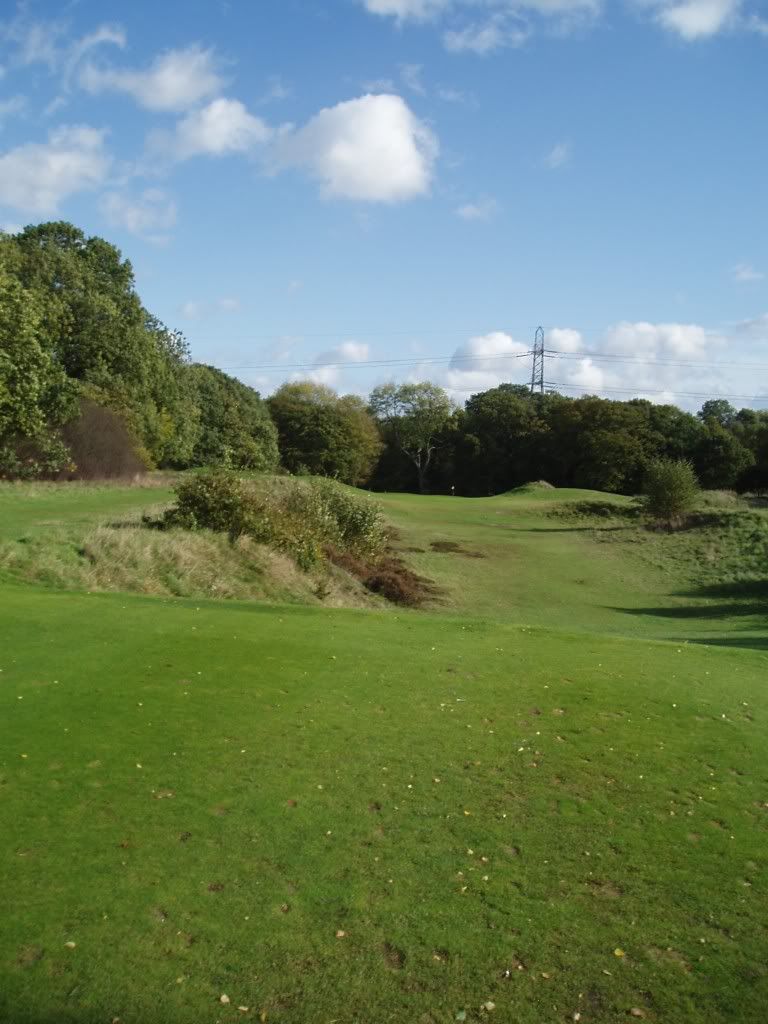
This was a somewhat unsatisfactory hole until Pinsent opened up a channel so that the bunkerless green can be seen from the tee.

In fact the best way to play the hole is to drop the ball 20 yards short of the putting surface, allowing it to run on. Pinsent also removed a near vertical bank at the rear of the hole. There were plans at various times to move the green into the space behind the present green, but they were never carried out.
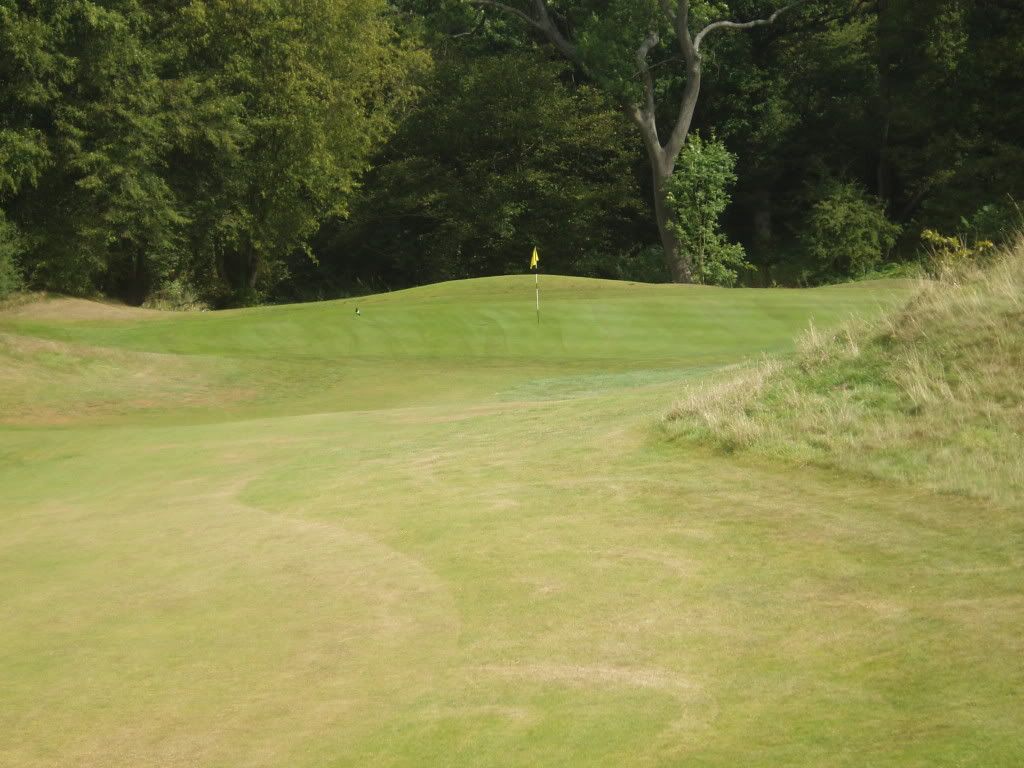
Not a green to overshoot.
8. 101 yards par 3
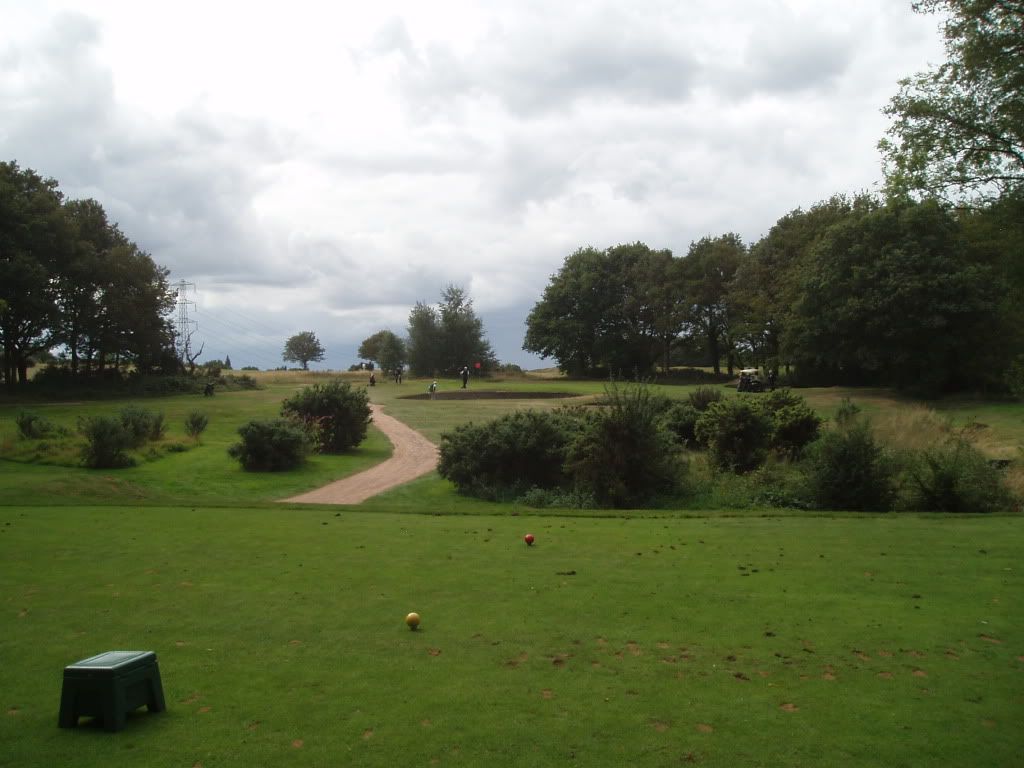
A tiddler. Pinsent constructed a new tee just behind the previous green to give a different angle of approach to the green but the members didnít like it. The teeing ground is huge, giving quite a variety to the shots required.

From the rear left of the green you may just be able to discern the slope down from back to front on the putting surface. Downhill putts here are not easy.
9. 362 yards par 4

Another blind drive towards a marker post on the crest of a hill. Formerly it was featureless, but Pinsent has added gorse on the left and visible bunkers on the right. The fairway narrows considerably at this point.

This is rather an attractively framed green.
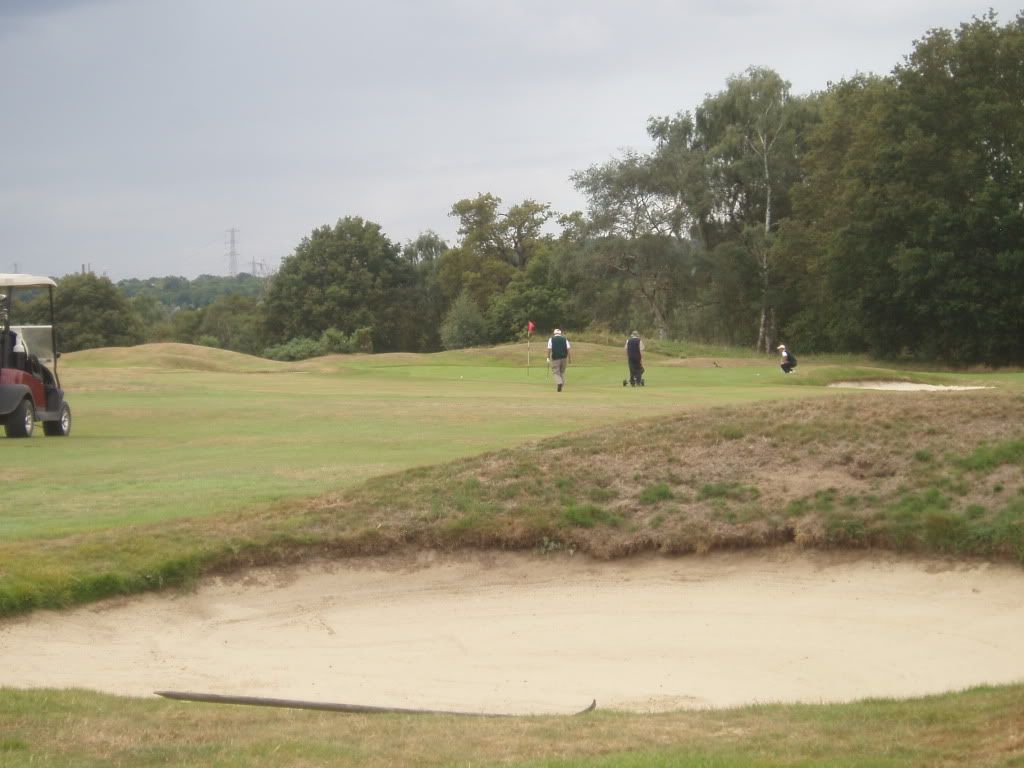
The contours of the green and attendant bunkering combine to make a rear left pin position hardest to access.
Iíll post the back nine later.